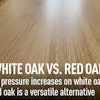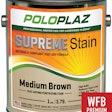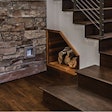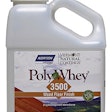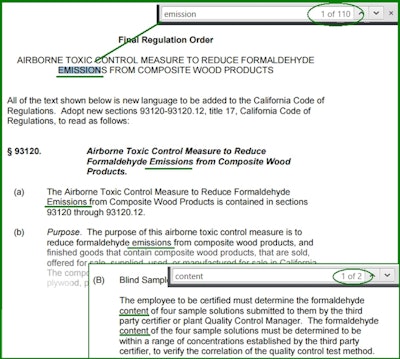
I’ve talked about this quite often in the past, but I think we need to reinforce this concept again. When you look at formaldehyde in terms of composite wood products (like plywood in engineered flooring or MDF in laminate), you have two ways to consider the issue: Content vs. Emissions.
I’ve been reading all the news stories you have. I don’t want to get into the stories and charges themselves, but I do want to take issue with one bit of language I see over and over in some variation or another. The most egregious description that absolutely drove me nuts was the phrase “formaldehyde drenched flooring.” It was the worst example of the general misrepresentation of the CARB rule as focusing on the formaldehyde content in the product. You have all seen repeated references to a variation on “X contained high levels” of formaldehyde.
I’d like to direct everyone to the final CARB rule which references the word “emission(s)” 110 times, including in the title itself. On the other hand, the rule refers to content just twice, in a single paragraph referring to an analysis of a wet solution—not a regulated wood product.
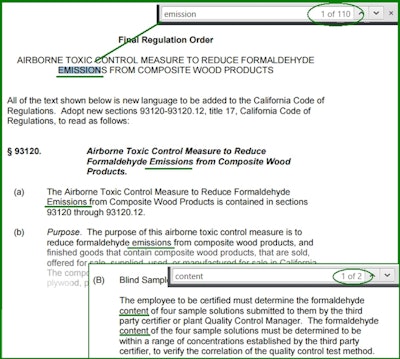
This is a serious issue. Set aside the lawsuits or stock values and look at it just from a simple business position—from YOUR business’s position. There are a lot of regulations that you need to understand how to comply with. You want to understand your liability for labeling. Your sales staff needs need to be prepared to explain this to customers concerned about their home’s indoor air quality.
And the first step to doing this right as an industry is to make sure we’re using the correct vocabulary and clearly understanding and discussing the issue.
CARB is NOT about what formaldehyde content goes into the product.
CARB IS about what formaldehyde emissions come out of the product.
Why is this so important? At a minimum, it would seem logical that a higher formaldehyde input/content would lead to higher emissions. But it’s not always the case.
While of course formaldehyde content can play a role in emissions, there are a host of other production process variables, like the addition of so called “catchers” or the glue blend (phenol vs. melamine, etc.), the press conditions, etc., that ultimately determine a product's emission properties. Time can be a factor too, as is the type of material being processed. In fact, two companies can have the same formaldehyde content in their glue but have respective finished products with very different emission profiles based on other issues.
And in the case of a value added product, the other conditions impact on the emissions profile from the final finished good. Is a wood veneer on top of the plywood and if so, what species? Oak is more porous than maple. Is there paper on it like there is with laminate? That’s a surprisingly good emissions barrier. Is there a chemical finish? Oil, UV, something else? When they added the melamine laminate on top, what glue did they use? The formaldehyde content (or for that matter, the emissions level from the CARB regulated component) doesn’t always directly relate to the final product’s emission profile, nor is it always the cause of an emission (or lack thereof).
The bottom line is that no matter what we put in or how we do it, we need to focus on what is coming out. And we all need to use the right language to discuss it.
Here are some of the key old posts that I personally think are highly worth reviewing to help make sure we all get the difference between content and emissions and choose the right language for discussions:
09/28/10 Formaldehyde, Part 2: Emissions vs. Content
4/17/12 Formaldehyde Certifications: Product vs. Process
4/16/13 Formaldehyde Comparisons: Let's Stop Scaring People About Formaldehyde
4/23/13 We're all Chemicals
4/30/13 Smokers Have More Chemicals
7/16/13 Alphabet Soup Series, part 9 of many: TPC
12/16/14 What’s U Good For…
6/11/13 Going NAF
8/19/14 Alphabet Soup Series, part 14 of many: NAx
10/7/14 Goodbye to NAUF?
10/14/14 Zeroing in on Language, part 1, Zero Content
10/21/14 Zeroing in on Language, part 2, Valuing E0
10/28/14 Zeroing in on Language, part 3, Compliant vs. Certified
12/30/14 Yeah, I Know I’m Wordy













